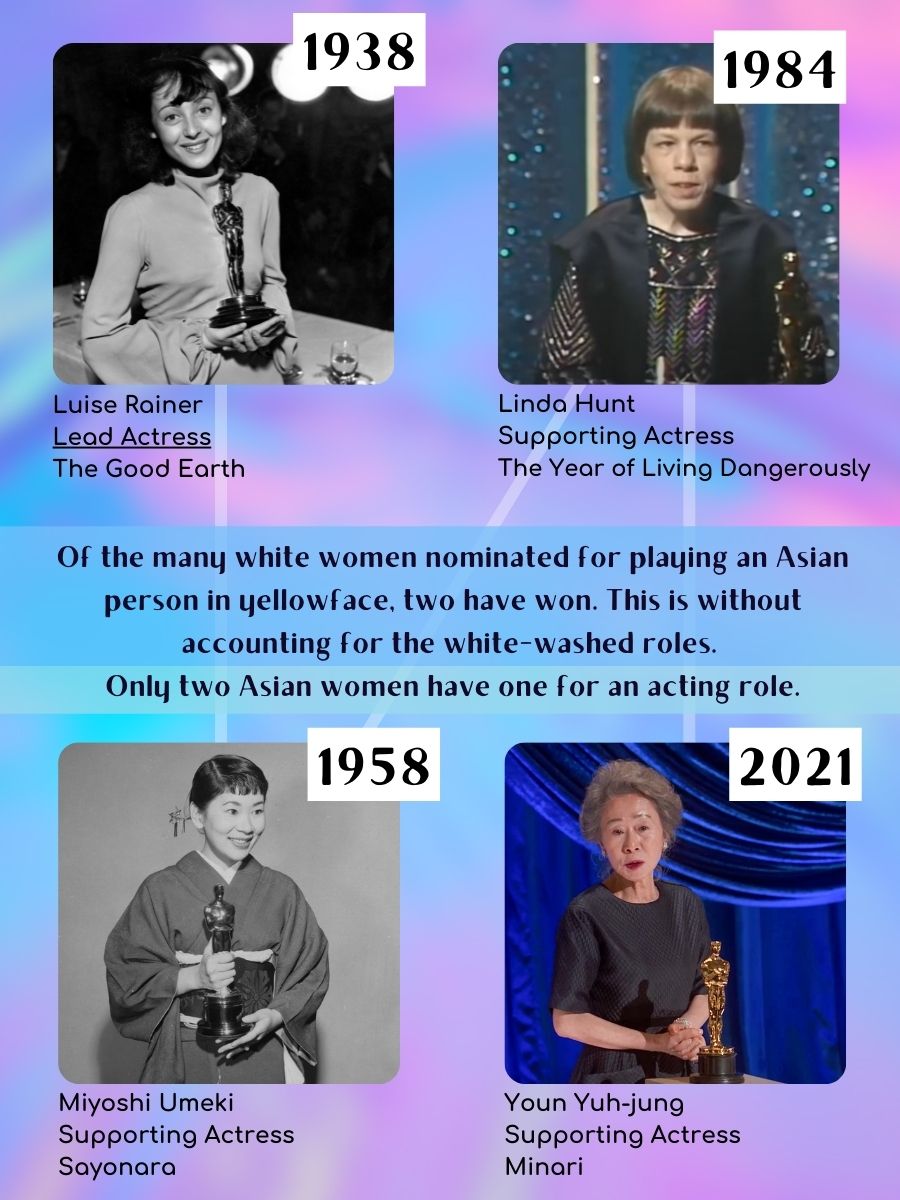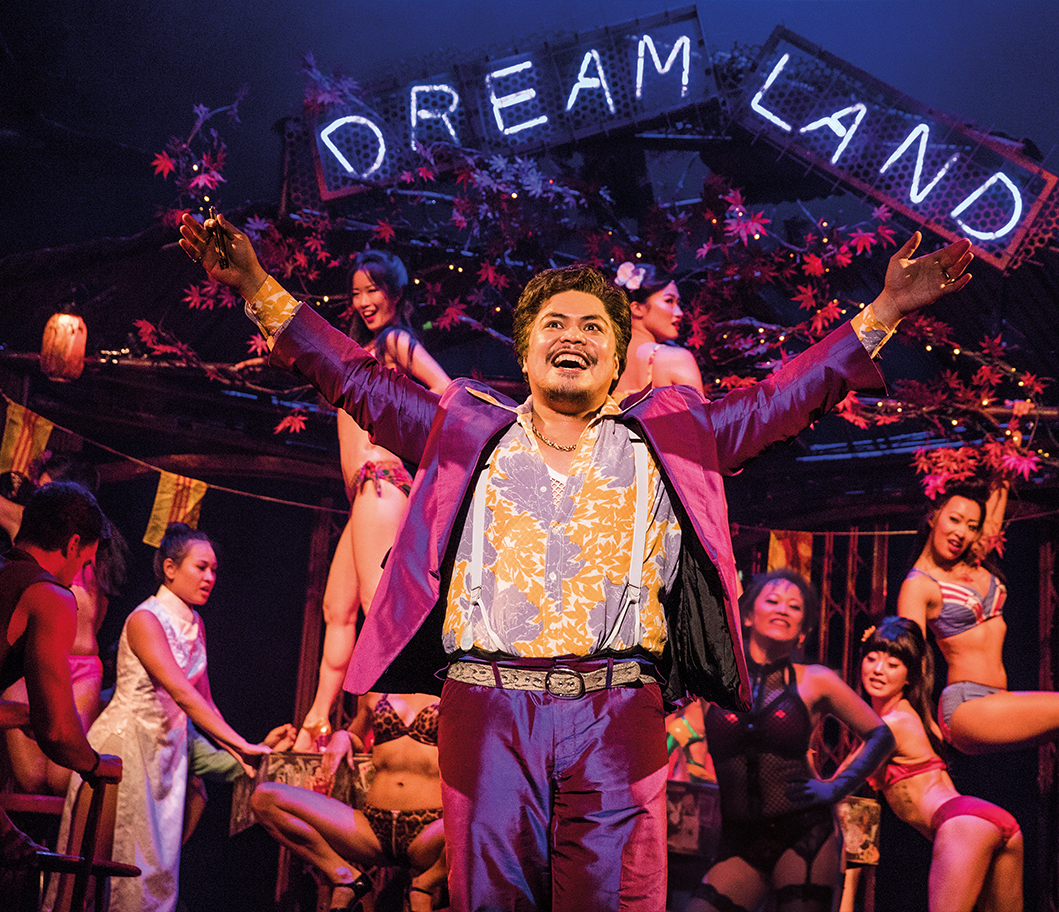
BLOG: Online resources that give context to animosity toward Asian Americans
All elements of this blog series have one common thread – they are composed of things that interest me at the moment. This has not changed for this entry. However, the last few months, much of the time that would be spent discovering the elements that make up this blog have been spent trying to process what happened March 16 in Atlanta and April 15 in Indianapolis.
As a Black woman, there is a lot I have in common with other marginalized groups. It is easiest to see the connections and feel a shared sense of struggle with the Latinx community. Growing up in Pasadena, almost everyone my age growing up was Mexican-American or Salvadorian-American. I have made an effort to focus on groups like Indigenous and Asian/Arab people because these are not communities I regularly interact with. When selecting a book to read or a movie or YouTube video, choosing these voices deliberately is one of the few ways to engage with their stories. From popular media to the U.S. education system, everything is Eurocentric — so when faced with a mass shooting targeting Asian American women, I was at a loss for words. Beyond the upside down-reality of mass shooting in the United States, how could it get this bad for this group? I had a scant understanding with little frame of reference.
So I began reading, watching and listening. We have a shared history and face similar obstacles due to the persistence of white supremacy. While writing this entry I saw that my selections unintentionally tend to center East Asians. While I did not add it (because I am still reading the book), the book “White Tears/Brown Scars: How White Feminism Betrays Women of Color” by Ruby Hamad provides many historical and contemporary stories of women across the Asian diaspora. This entry into “Alyssa Curates the Internet” features resources online that have helped me contextualize how this surge of hate crimes happened so easily.
Music:
“Vincent Chin” (Fort Minor remix) by Model Minority – Outside of the first piece of legislation limiting immigrants, “Chinese Exclusion Act” (1882), and the Japanese internment in concentration camps in the 1940s, the most commonly referenced instance of anti-Asian hate is the murder of Vincent Chin. This song gives the basics of what happened leading up to the state charges and “punishment” of $3,000 and probation.
Made up of emcees Grand Master Chu, D-One and Inglish, Model Minority is a reclamation of the harmful stereotype (see the first entry in the “must-watch” section.) For more music check out the summer 2019 playlists “A Celebration of LGBTQIA+ Asian American Musicians” and “Songs about Asian American Labor” put together by the Asian American Research Center.
Content warning: This entry has a racial slur and uses graphic images from the documentary “Who Killed Vincent Chin” (1987).
Must watch:

“#OscarsSoWhite: From Anna May Wong to Awkwafina” — Accessible media (like film) have an immense influence on the way we view the world. While we may acknowledge the Oscars as an elitist institution, it reinforces the canon and affects how movies get made. This is why though it seems trivial in the grand scheme of things, this video about how Hollywood has treated east Asian actresses is so essential. Two years ago, YouTube channel Be Kind Rewind began this series with “#Oscars So White and The Legacy of Halle Berry” and since has released both this video on Asian American actresses and, more recently, “Rita Moreno and Overcoming ‘Otherness’” about Latinx actresses. My most recent viewing (yes I have watched this video multiple times) was in the context of the murders in Atlanta and serves as a reminder that the harmful stereotypes of Asian people in the United States can be deadly.
“We Need To Talk About Anti-Asian Hate” — I am not one to go to the Try Guys for anything serious, but this long-form video in partnership with PBS is an excellent overview and starting point to learning about anti-Asian vitriol. Hosted by Eugene Lee Yang, the video chapters give the basics like “Yellow Peril,” “Model Minority,” “Hate Rhetoric” and “Monolith & Media,” but there are also very specific chapters and overlooked pieces of the larger narrative. This includes subjects like the murder of Vincent Chin, the generational divide (within groups), and, most importantly to me, the history of Black and Asian American communities.
The latter is very important because it is both encouraging to see the decades of rainbow activism between the groups and heartbreaking to see the ways white supremacy has put us against each other. This cannot be overlooked as some of the hate crimes towards the Asian community (especially elders) of this past year alone were committed by members of my own community.
This video includes a link to a resource material list and the 2020 five-part PBS documentary series “Asian Americans.” The first three episodes are available on YouTube.
Must reads:
“The Madame Butterfly Effect: Tracing the History of a Fetish” (Bitch Media) — Asian women have consistently ranked at the top for preference in dating apps and Asian men at the bottom. The 2014 essay by Patricia Park explains (as well as you can) the history of the Asian American fetish and how that has continued to be perpetuated in popular media from books to musicals and movies.
Speaking of musicals, in 2019, I did a review of “Miss Saigon” and stated, “each Vietnamese character is written to embody almost every Asian stereotype from the women being hyper-sexualized and/or submissive …”. When I wrote this, I had enough of a feeling to note that, but upon reading the essay, I realized that structurally this musical is harmful in almost every way and should stop being revived. It is irreparable.

In 2017, AJ+ released “Why Arabs and Muslims Aren’t Exotic,” and in April 2021 another writer at Bitch wrote “Delicate Goods: The Ornamental Objectification of Asian American Women in Pop Culture”– both are worth reading/watching after Park’s essay as they both continue to explore the fetishization perpetuation by popular media.
“What to keep in mind as you talk about the Atlanta spa shootings” (The Lily) — After reading Park’s essay, I found this vital list. Beyond the fetishization, writer Chelsea Cirruzzo discusses the roles of intersectional feminism, policing and the anti-sex worker sentiment when speaking on the Atlanta shooting. This serves as a jumping-off point for many considerations not given when discussing what happened.
“Remembering lives lost in the recent tragedy in Atlanta” by Shreerekha Subramanian — With the exception of Eugene Lee Yang and the story of Vincent Chen, most of my recommendations thus far have been focused on large history, concepts and ideas. This is important, but sometimes looking at large moments and numbers, removes the individual narratives harmed by this hate. This contribution to The Signal by Subramanian, professor of humanities, starts with the individuals by name whose lives were lost that day and something about them. When you read this, I encourage you to read it aloud.
“Black and Asian-American Feminist Solidarities: A reading list” by Black Women Radicals — This has a long catalog of resources and further reading that was specifically made with Black and Asian solidarity in mind. If heavy reading is not your forte, The Asian American Feminist Collective and Black Women Radicals came together in May 2020 to talk about COVID-19 and building solidarity.
“Okay but what action can I take?”
While our individual journeys to become better accomplices to those of Asian and Pacific Islander heritage may look like opening one’s wallet to an organization in need or a mutual aid fun, that is not feasible for many students. So broke person to broke person, I ask you to join me in signing up for bystander intervention training.
Bystander intervention (from what I understand (I have not done it yet)) is a safe way to protect vulnerable persons, be they a person of color, LGBTQ+, an immigrant, etc., from an escalating attack. It is easy to say “oh when I see a microaggression or hate crime, I will speak up” – but many of us freeze up or look away when it happens. In many of the attacks against Asian Americans, there are people around, just not doing anything. There is a whole show called “What would you do?” showing when bad things happen around us, most people do nothing. That is where bystander intervention training comes in.
Monthly through at least September, several Houston-based non-profits have partnered together with Houston Coalition Against Hate to offer free, remote bystander intervention 101 training.
Join me in signing up for this!
A new @pewresearch survey found that one out of three #AAPI adults report they fear threats and physical attacks. Join a FREE Bystander Intervention Training workshop presented by @HCAH_TX @OCAHouston @iHollaback. The next training is Thursday, May 20 » https://t.co/6e8PfU63yq pic.twitter.com/zTKubnLtxh
— Asia Society Texas Center (@asiasocietytx) May 4, 2021
NOTE: I (Alyssa) am an intern at the Asia Society Texas Center (ASTC) for the 2020-2021 academic year. The Chinese Community Center and ASTC are so-sponsors of these training.
